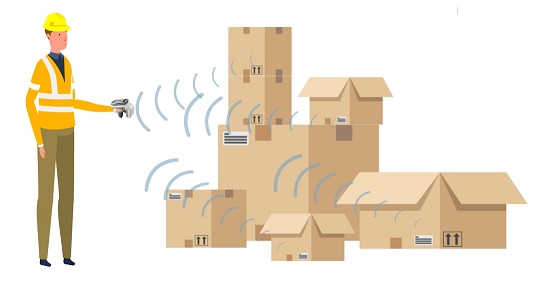Pros and Cons of RFID - Is It Right for Your Business?
RFID is a popular buzzword nowadays. But what is it and is it right for your business?
In an RFID system, you affix electronically encoded tags to items and then use a special scanner to capture that data over radio frequencies, not unlike how your phone can detect Bluetooth devices. The system is similar to traditional barcoding but with some unique advantages.
For example: RFID allows you to scan a large number of tags simultaneously. With a barcode, you can only scan one at a time. RFID also allows you to scan items that are hidden from view. This is helpful if you need to scan items that are hard to reach, far away, or packaged in a box. RFID readers can also provide real-time location data that many barcode scanners don’t. RFID tags can also be encoded with new information at any time, while with a barcode, you’d need to make a whole new label.

But RFID isn’t without drawbacks.
First, RFID systems are more expensive than a barcoding system. Special tags, readers, and RFID encoders are needed. A simple setup can cost up to three or four times more than a similar barcode setup. It’s also more complicated to set up and use - so you’ll probably need to hire outside help to get a system installed.
For some uses, these extra costs can be justified. In the cannabis industry, many state laws require stores to do count an entire store’s inventory every night. With RFID, one person can complete a count in minutes while hand-counting with barcodes can take hours.
RFID is also ideal if you’re tracking small, highly-valuable objects like specialized medical equipment of precious gems that might get lost. An RFID system with location tracking can help quickly locate anything that’s gone missing. That same location tracking system can also be used to track the movement of people and assets in warehouses and hospitals if an RFID chip is used in ID badges or wristbands. This can reduce inventory theft, improve operational safety, and help with contract tracing.
But for many owners, a barcoding system with decent inventory or asset tracking software is enough - especially if they’re not able to make the financial investment.
But for many owners, a barcoding system with decent inventory or asset tracking software is enough - especially if they’re not able to make the financial investment. If you think an RFID system is right for your business, give us a call or email. We have engineers on call ready to help answer any questions you might have.
We're a call or email away!
1-800-903-6571
Why Use POSGuys?
Industry Experts
We've been in the industry for over 20 years.
Lifetime Hardware Support
Never worry about long downtimes.
Sales with Integrity
We put people over profit. No tricks. No hidden fees.